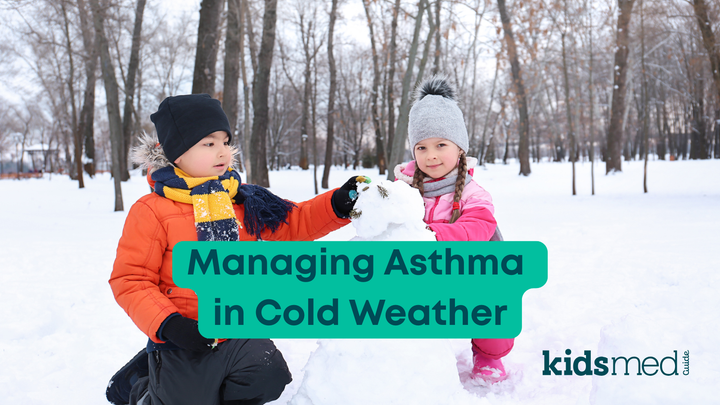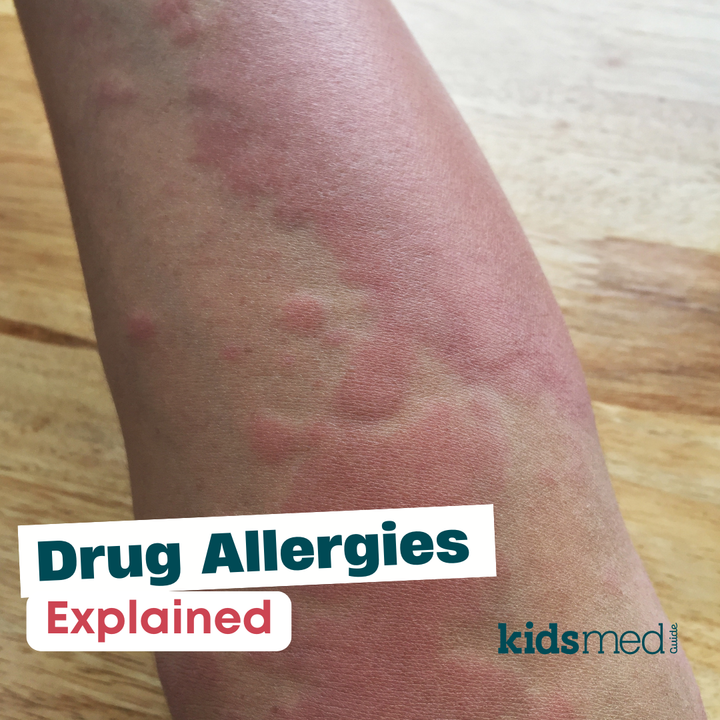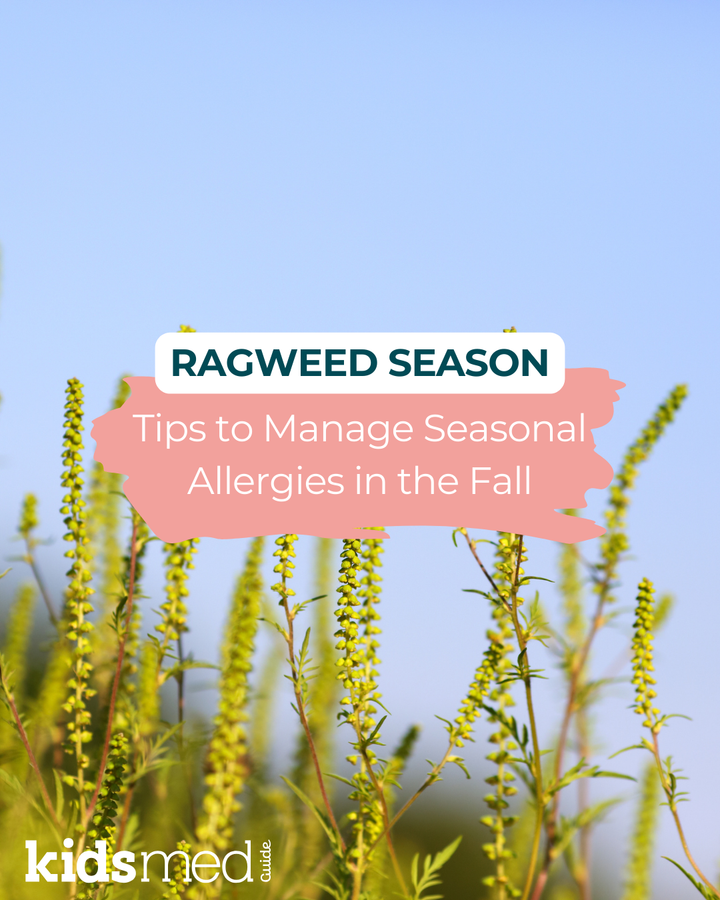Are Allergy Eye Drops Safe for Kids?

Have your kids rubbed their eyes and whined, “I’m itchyyyyy” all season? Well, my friend, you’ve come to the right place. It’s allergy season, and tiny eyes (and noses!) everywhere are affected. We have tips for choosing and administering an allergy eye drop to your red-eyed monster.
What Are Seasonal Allergies?
In a nutshell, allergies are the body’s abnormal response to a regular thing. With seasonal allergies, the body recognizes a normal substance in the environment that presents yearly in the same season, such as tree pollen in late spring, as an invader that must be destroyed. Read more about seasonal allergies in kids here!
The immune system overreacts to the allergen and releases a ton of histamine and other invader-fighting molecules. The end result for kids is sneezing, runny nose, itchiness, eye discomfort… and all-around misery! The allergic response caused by an environmental allergen like pollen is also called allergic rhinitis or hay fever.
Allergic conjunctivitis is the official scientific term for inflammation of the conjunctiva (the lining covering the eyes) that occurs in response to an allergic reaction. Not all allergy sufferers experience allergic conjunctivitis. For others, allergic conjunctivitis may be the most prominent symptom of allergic reactions.
Allergic Conjunctivitis: Red, Itchy Eyes
Last year, allergic conjunctivitis—red, itchy eyes caused by an allergic response—was my first clue that my kids were dealing with seasonal allergy onset rather than the 27th cold of the season.
My older two kids could tell me that their eyes were itchy, but the itchiness presented as eye rubbing for my toddler. He also rubbed his eyes in sleep, leading to sad little scratches and dark circles the following morning!
I’ve been down the allergy road before, so I started my kiddos on an allergy treatment plan and spruced up my home environment and routine with some good allergen avoidance habits. We added allergy eye drops for a few weeks, and 1,000 tissues later, we seemed to be in a better spot.
If this is the first season you’re dealing with allergies, or if you’re unsure, call the pediatrician. Typically, a doctor diagnoses seasonal allergies when a patient has long-lasting cold symptoms that seem to be caused by exposure to something.
Eye Drops for Allergies
If first-line treatments are optimized but tiny eyes are still bothered, parents may consider adding an allergy eye drop.
It’s worth noting that allergy eye drops are usually not used alone to alleviate seasonal allergies and red and itchy eyes. They are often added to a daily dose of oral antihistamine or nasal steroid when the other medications aren't enough.
However, there could be some exceptions to this. For example, suppose allergic conjunctivitis is the main symptom, and you’ve confirmed with your pediatrician that it’s allergy-related and not something else. In that case, the doctor may recommend using only eye drops. Less drug therapy in children is generally better than more!
Are Allergy Eye Drops Safe for Children?
Allergy eye drops are safe for children, and there are some appropriate options for toddlers, too! But first, a safety note. Allergic conjunctivitis can be easily confused with viral or bacterial conjunctivitis or even a scratch or irritation on the eye.
The addition of an allergic eye drop may be inappropriate if a bacteria or virus causes red, itchy eyes. Bacterial conjunctivitis, in particular, needs an antibiotic eye drop. One clue that you may be dealing with bacterial conjunctivitis: “The goop.”
For those parents not lucky enough to have experienced “the goop” - it’s basically what it sounds like. Eyes will be itchy and red but produce copious amounts of mucous and may even be caked shut after sleep. Bacterial conjunctivitis is also very contagious and tends to spread through a family like wildfire. So that’s fun.
Choosing an Allergy Eye Drop for Children:
Several allergy eye drop options are available on the market. Most are over-the-counter. Remember that the same common ingredients may be found under different branded names when shopping.
Usually, the drops will say “allergy” on the box to help clue you in, but look at the active ingredients and use the section on the back of the box to be sure that the drops are actually for allergic conjunctivitis! Here are some standard options:
The products listed in the table above should be available at most drugstores or major retailers. They all share common side effects: temporary blurry vision, eye discomfort, etc. Headache or cold symptoms can also occur.
These drops generally cause blurriness only for a few moments and are typically tolerated by most patients. If there are any concerning side effects, such as severe eye discomfort or vision changes that aren’t temporary, stop use and get seen by a doctor.
Speaking of doctors, this review does not include some newer options available only by prescription. For example, the FDA recently approved cetirizine ophthalmic drops, but you'll need a prescription from the doctor for that.
Wondering What Eye Drop to Choose?
Here at KidsMedGuide, we don’t think there’s a clear winner. All of the products have similar side effects and effectiveness. Factors such as cost and availability are probably the most important to consider when selecting a product.
I would probably not choose naphazoline-pheniramine, as it’s an older product with more safety warnings, and other newer and safer options are available.
For my kids, I lean towards olopatadine 0.2% (Pataday), mainly because it’s a once-a-day option and can be used in toddlers. Getting eye drops into multiple tiny eyeballs is no easy task, so anything once a day sounds great to me!
Olopatadine eye drops have also been around for a while, first as a prescription, then over the counter, so the product's safety is pretty well established. If you try one product for several days and you find it’s just not working all that well, switch it up and try a different brand. Some kids may respond better to one drug vs. another.
Tips for Allergy Eye Drops
What are some other essential things to know about eye drops?
- Keep the bottle tip clean.
- Wash your hands before administering a drop, and replace the cap immediately.
- Do not let the bottle tip touch the eyeball or any other surface.
- Store them in a cool, dark place away from curious toddlers. They aren’t equipped with child safety-proof caps, and while unlikely to cause harm when used correctly, you don’t want your kid to drink them!
- Some products may require a gentle shake; others don’t. Double-check the label.
- If your child is taking other eye drops, separate the administration of different drops by at least 5-10 minutes.
- For any older kids who wear contact lenses, confirm that the eye drops are safe for lens wear (the package insert should state this). The usual recommendation is to wait 10-15 minutes after drop administration before putting contacts in and never to put in contacts if the eyes are still red.
Final Thoughts on Eye Drops for Kids
So that’s all well and good, but how do you get eye drops into the eyeballs of a squirmy toddler or unwilling preschooler? Great question. If you find the answer, please let me know. So far, bribery and threats haven’t worked for me, and there’s typically a lot of yelling.
For a step-by-step guide on eye drop administration, check out this post: How to Administer Eye Drops to Kids (and Babies).
Keep going with your allergy meds, including eye drops, until the season ends! It’s easier (and advised) to treat throughout the season and keep the allergic response at bay than to give up on the meds too soon and have symptoms come surging back. Spring allergies often run through June, and fall allergies can start as early as August, but you can check your area’s weather and air quality reports as a guide. Best of luck, parents!
The following references were used to compile this information:
American Association for Pediatric Ophthalmology and Strabismus. (2023, March). Allergic Conjunctivitis. https://aapos.org/glossary/allergic-conjunctivitis
DailyMed. (2023, December 15). Zaditor - ketotifen fumarate solution. https://dailymed.nlm.nih.gov/dailymed/drugInfo.cfm?setid=ac66b1e4-c2b0-a4c3-09e3-ebd44a2f7c9f Pataday (olopatadine) Eye Drops
DailyMed. (2023, June 26). Olopatadine hydrochloride ophthalmic solution. https://dailymed.nlm.nih.gov/dailymed/drugInfo.cfm?setid=d7bcba63-bfaf-240b-199e-2e42a91c19c9
DailyMed. (2024, March 5). Alcaftadine solution/drops. https://dailymed.nlm.nih.gov/dailymed/drugInfo.cfm?setid=b94e071d-421d-48ec-a4ea-254aa8af19ff Lastacaft (alcaftadine) age 2+
DailyMed. (2024, March 27). Naphcon A - Naphazoline hydrochloride and pheniramine maleate solution / drops. https://dailymed.nlm.nih.gov/dailymed/drugInfo.cfm?setid=4d8412ff-0e59-4a6a-9f3e-4e6f6204bf58 Zaditor (ketotifen) Eye Drops
Nemours KidsHealth. (2022, January). Kids and Allergies. https://kidshealth.org/en/parents/allergy.html



